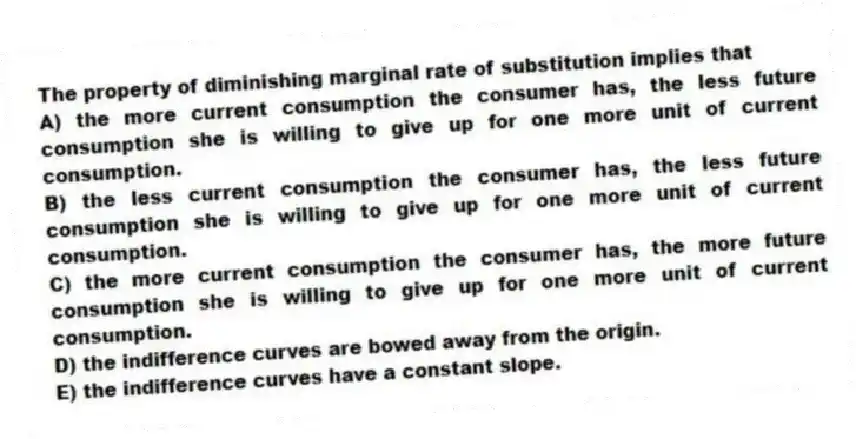
The property of diminishing marginal rate of substitution implies that
A) the more current consumption the consumer has, the less future consumption she is willing to give up for one more unit of current consumption.
B) the less current consumption the consumer has, the less future consumption she is willing to give up for one more unit of current consumption.
C) the more current consumption the consumer has, the more future consumption she is willing to give up for one more unit of current consumption.
D) the indifference curves are bowed away from the origin.
E) the indifference curves have a constant slope.
Correct Answer:
Verified
Q32: Aggregate consumption is
A) positively related to savings.
B)
Q33: An increase in first-period income results in
A)
Q34: A martingale has the property that
A) it
Q35: For the consumer to be at an
Q36: The marginal rate of substitution of current
Q38: The optimal consumption bundle is where
A) c
Q39: The idea that a permanent increase in
Q40: A consumer is a borrower if
A) optimum
Q41: In a two-period model,government spending is financed
Q42: The government's future period budget constraint is:
A)
Unlock this Answer For Free Now!
View this answer and more for free by performing one of the following actions

Scan the QR code to install the App and get 2 free unlocks

Unlock quizzes for free by uploading documents